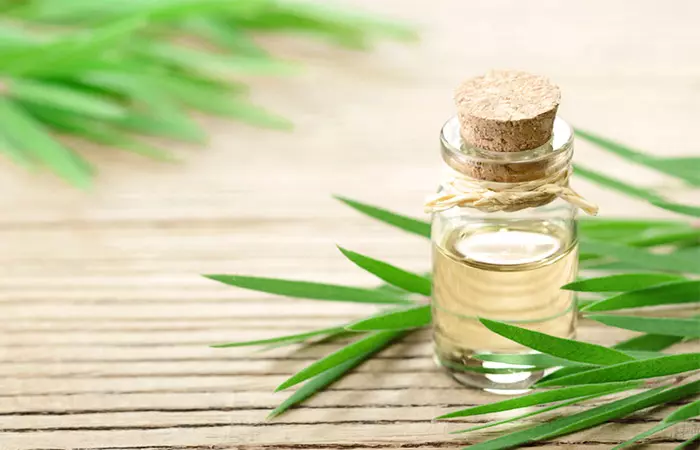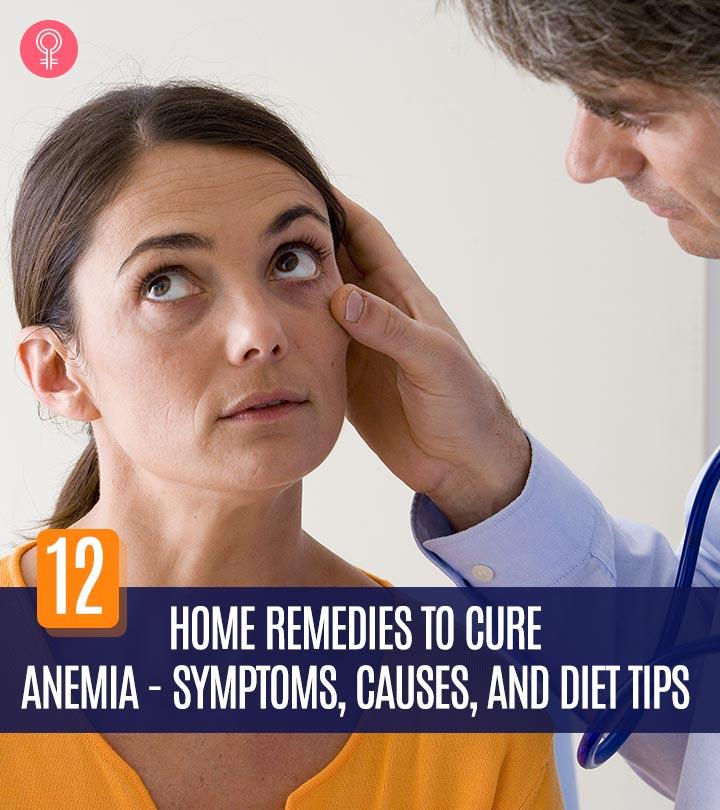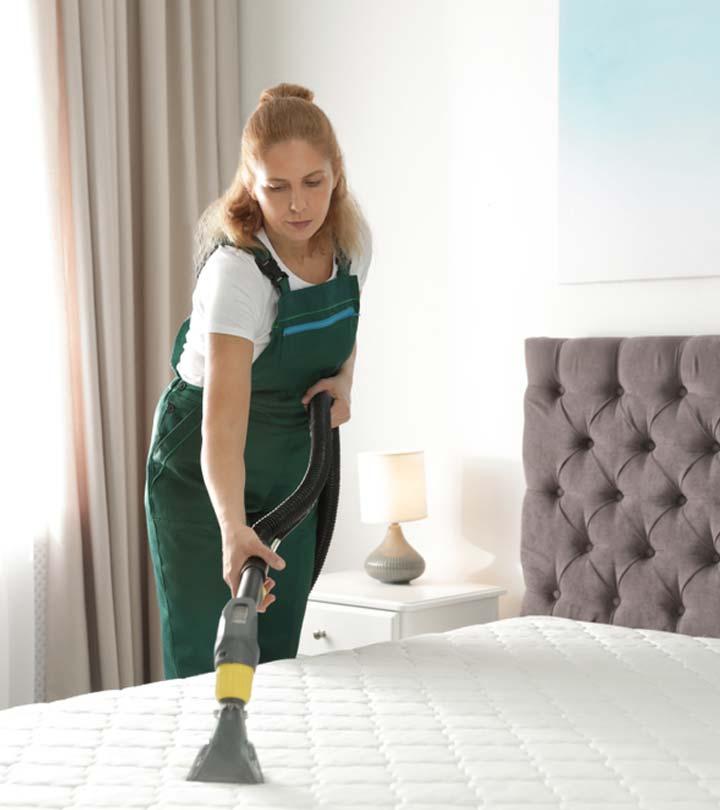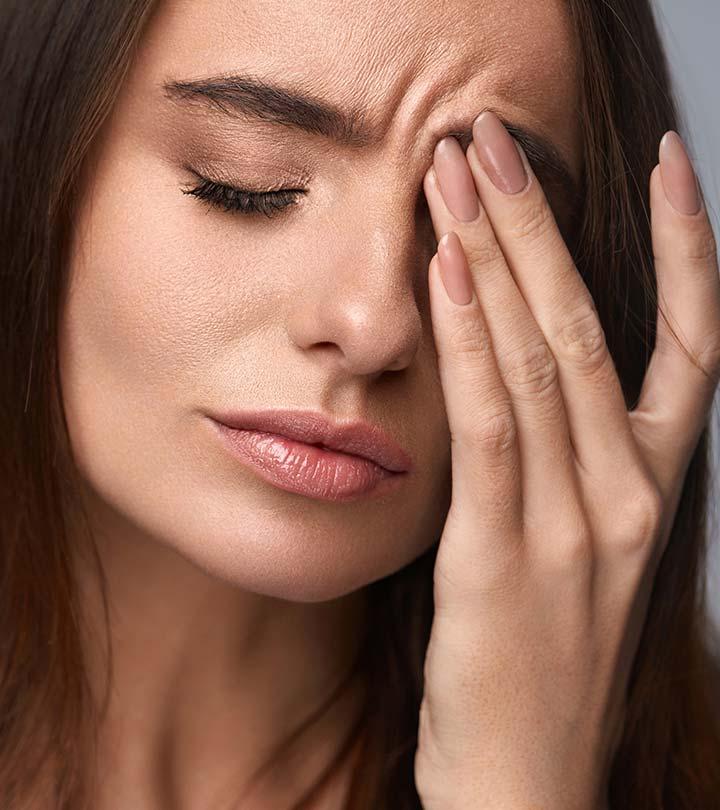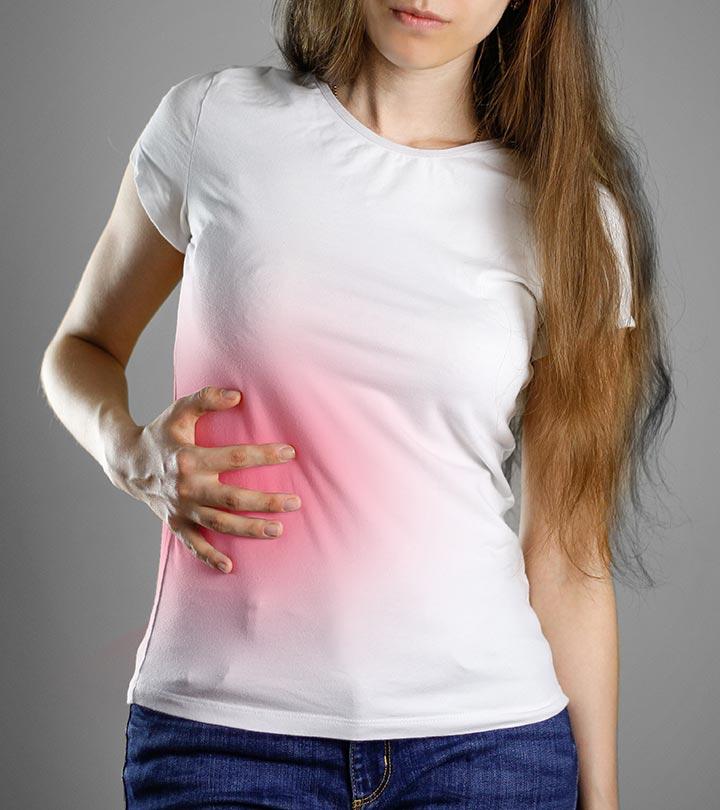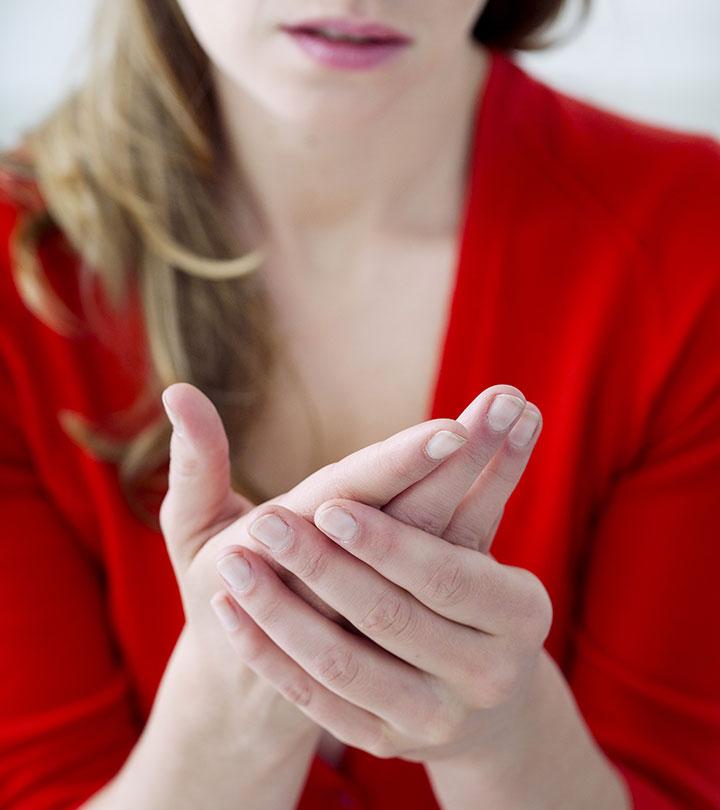Bumps After Waxing: Causes, 6 Home Remedies, And Prevention Tips
Prevent those unwanted bumps and soothe your skin with these easy DIY remedies.
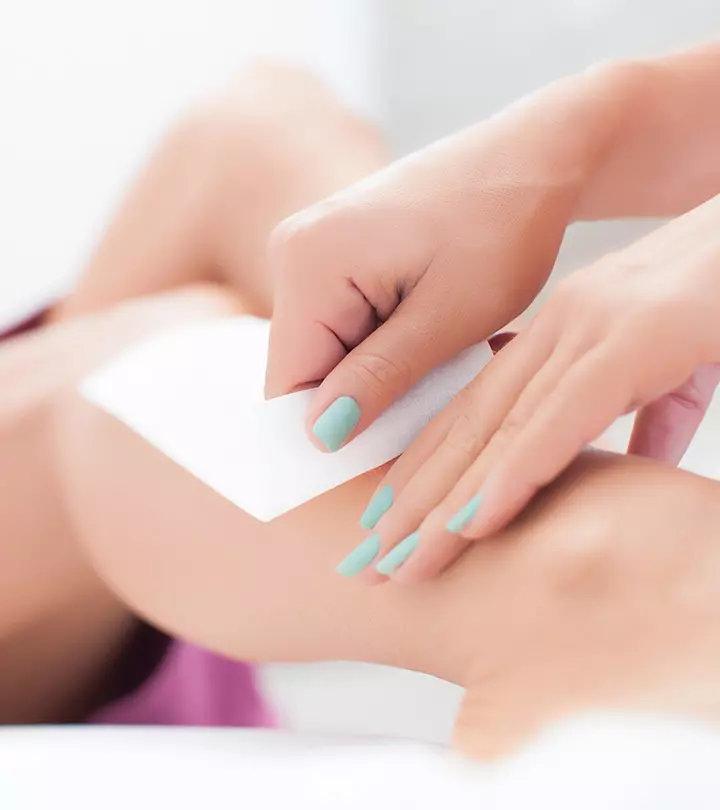
Image: iStock
The bumps you get after a waxing session are pretty normal and not a cause for concern at all. While they go away in a few days, waxing every month and dealing with these bumps can indeed be a strenuous task. To speed up the process of healing, you can try a few home remedies to get rid of the bumps after waxing. These DIY remedies combine a few ingredients from your kitchen that reduce those annoying bumps in a jiffy. Every time you get those bumps after a session, all you need to do is try the home remedy of your choice and your skin is good as new. Do note that wearing loose clothes to avoid any irritation with the bumps is vital. In this article, we discuss the causes along with some simple tips to prevent wax bumps.
In This Article
What Causes Bumps After Waxing?
Our hair resides in hair follicles in the skin. When waxed, these hairs are pulled out with force, and this causes stress on the skin. The basic response of the body to this is inflammation of the site subjected to stress.
This swelling of the hair follicles usually goes down by itself in a day or two. At times, these follicles can get infected and develop bumps filled with a liquid. These appear as white bumps, and it may take a while for these to go away by themselves. When the bumps are formed a couple of days after the waxing, it could indicate ingrown hairi A condition where shaved or plucked hair grows back to curve into the skin, causing pus-filled inflammation. .
Dr. Cory Gaskins, a certified dermatologist, says, “Bumps usually go away within a few days after waxing. However, if you have very sensitive skin, the bumps may last up to a week.”
Itchy bumps and/or red bumps can also appear a week after waxing. Whatever the case, you can use various treatments to get rid of them. Here’s how!
How To Get Rid Of Bumps After Waxing
1. Aloe Vera For Waxing Bumps
This remedy can be used to treat waxing bumps on body parts like the chest and legs as well as the bikini line. Aloe vera soothes inflammation and soreness. It also moisturizes and hydrates the skin (1).
You Will Need
An aloe leaf
What You Have To Do
- Pluck a long leaf from the aloe plant.
- Slice the leaf sideways and extract the gel.
- Transfer it to an airtight container.
- Apply some of this gel on the bumps and massage it in.
- Leave it on overnight.
- Store the remaining gel in the container in a cool place.
How Often You Should Do This
Apply this every night before going to bed.
2. Tea Tree Oil For Waxing Bumps
Tea tree oil can be a lifesaver and one of the best essential oils for treating waxing bumps. It prevents infections because of its antibacterial, antifungal, and antiviral properties. It also speeds up the skin’s natural healing process (2).
Caution: Dilute the oil with a carrier oil like coconut or olive oil as tea tree oil is very potent. Also, do a patch test for allergies before using it on your skin.
You Will Need
- 2-3 drops tea tree oil
- 1 teaspoon olive oil
What You Have To Do
- Mix the essential oil with the olive oil.
- Apply this blend on the affected area and massage for a minute or two so that it is absorbed into the skin.
- Leave it on overnight.
How Often You Should Do This
Repeat this every night. Reapply during the day if possible.
3. Apple Cider Vinegar For Waxing Bumps
This is a great remedy for bumps on the face and bikini wax bumps. The astringent and antiseptic properties of ACV prove to be beneficial in this case (3). It balances the skin’s pH and also reduces inflammation.
You Will Need
- Apple cider vinegar
- Water
- Cotton ball
What You Have To Do
- Dilute apple cider vinegar with water in a 1:1 proportion.
- Apply this mixture on the affected area using the cotton ball.
- Let it dry naturally for about 10 minutes and then rinse it off.
How Often You Should Do This
Repeat this once or twice a day.
4. Coconut Oil For Waxing Bumps
Coconut oil is more of a preventive measure than a remedy. It soothes inflamed and red skin. It is also an emollient that can condition and moisturize your skin (4). Its antioxidant content helps to accelerate the recovery process of the skin after having gone through the waxing session.
You Will Need
Organic coconut oil
What You Have To Do
- After waxing, cleanse your skin with a mild cleanser.
- Pat the skin dry and apply some coconut oil.
- Leave it on for as long as possible.
How Often You Should Do This
Reapply coconut oil every time before you bathe.
5. Witch Hazel For Waxing Bumps
This is an excellent coolant that soothes the skin. It has antiseptic, astringent, and anti-inflammatory properties (5). Use this for white bumps that are formed on the upper lip after waxing to prevent them from flaring up.
You Will Need
- Witch hazel solution
- Cotton ball
What You Have To Do
- Dip the cotton in the solution and apply it to the area that has been waxed.
- Let it dry. There is no need to rinse this off.
How Often You Should Do This
Do this twice a day.
6. Epsom Salt Bath For Waxing Bumps
An Epsom salt bath helps exfoliate the skin and is great for relieving skin inflammation (6). This may help relieve irritation on and around any waxing bumps while gently exfoliating the upper layers of skin to release the ingrown hair responsible for creating the bumps.
You Will Need
- 2 cups Epsom salt
- A bathtub full of warm water
- 10-15 drops of your preferred essential oil (optional for aromatherapy)
What You Have To Do
- Add the Epsom salt and essential oil to the warm water in your bathtub. Ensure the water is not scalding hot but comfortable enough for a soak.
- Soak in the bath for 15-20 minutes and let the bath work through your waxing bumps as well as your tense muscles.
- Use a soft washcloth to gently massage your skin and remove dead skin cells.
How Often You Should Do This
Two to three times a week.
Please keep in mind not to use some of these remedies immediately after waxing as a few ingredients can sting the skin that has become sensitized after waxing. Give a gap of a few hours and then opt for these cures for bumps after waxing.
Roxana, a teacher and blogger, writes, “After getting waxed, my face often develops a few red, itchy irritation bumps that go away by the end of the day (i).” However, her skin got more sensitive, so she decided to try out a Greek yogurt and honey mask to soothe the irritation. She observes, “Immediately upon applying the yogurt honey mask to my face, my skin felt soothed. My face went from hot and itchy to cool and calm in seconds!”
 Quick Tip
Quick TipHere are some more tips, tricks, and other related information about waxing bumps in the next section of this article.
Preventive Measures For Waxing Bumps
Waxing bumps can be easily prevented by using simple techniques to take care of the skin before your waxing appointment. Follow this routine:
- Exfoliate – The skin’s surface has a layer of dead skin cells, dirt, and impurities, which can clog your pores. Use a simple sugar scrub (sugar+oil) or any scrub that you may have at home to exfoliate your skin and get rid of these components. This process will make your skin smoother and easier for the wax to pull the hair out. It also prevents the formation of bumps as the impurities and dead skin have already been taken care of. Do this a day before the appointment.
- Cleanse – If you do not have the time to exfoliate before your appointment, use a cleanser to rinse away excess oil, dirt, and lotions or creams that you may have applied. These can clog the pores or irritate later.
According to Dr. Cory Gaskins, a certified dermatologist, “First, cleanse the area with antibacterial soap or cleanser. This will help to kill any bacteria that may be causing the irritation. Second, apply a soothing lotion or cream to the affected area. This will help to reduce inflammation and promote healing. Lastly, wear loose-fitting clothes. Tight clothing can irritate the skin and make folliculitisi A skin condition characterized by inflammation of hair follicles due to bacterial infection, causing reddish, itchy bumps on the skin. worse.”
- Heat – If you can do neither exfoliating nor cleansing, apply some heat to the area by taking a shower with warm water and placing a hot towel on the body part you are going to wax. Do this 30 minutes before the appointment to open up your pores. The hair will be pulled out easily, not only causing less pain but also reducing the chances of irritation from the waxing.
- Avoid products that contain AHAsi Alpha hydroxy acids are skincare exfoliants that peel away dead skin cells to reveal new, evenly pigmented skin cells. , BHAsi Beta hydroxy acids are skincare exfoliants that work deeper into the skin pore to remove dead skin cells, excess oil, and congestion. , and salicylic acid a week or two before waxing. These can make the skin thinner and irritate it further.
- Keep your skin moisturized. When your skin is hydrated, the waxing process will be smoother and not irritate the skin and cause bumps.
- Use the right wax to get the best results and prevent skin issues. Consult your beautician or aesthetician to understand this better.
- Do not wax during your periods as your skin sensitivity is greater during this phase.
- If you shave between your waxing appointments, stop shaving two to three weeks before it. Your hair needs to be long enough for the wax to pull it out efficiently from the follicles.
 Quick Tip
Quick TipKeep these points in mind before fixing your appointment.
Post-Wax Care And Precautions
- Some medicinal drugs may interfere with the waxing method adversely. For example, if you are following a course of retinoids, you should avoid waxing. These drugs induce the chances of lifting-off to a great extent. You can go for waxing only after six months of the course.
- Stay calm during the waxing procedure. Panicking often contracts the hair follicles of the skin, which becomes more susceptible to damage.
- Make sure the beautician applies an after-wax lotion to reduce the pain and discomfort. Check whether the lotion contains any mineral oil. If it does, it can clog the skin pores. Avoid it for better results.
Here are some tips that you can follow after waxing to avoid waxing bumps and other skin issues from cropping up.
Tips To Prevent Wax Bumps
- Sometimes, bleeding may happen due to the plucking of coarse hair directly from the follicles. Try applying ice cubes on the affected area. This will offer a lot of comfort.
- Apply ice even if there is no bleeding or burning sensation. It helps to close the pores.
- Do not apply any lotion or oil at least for a couple of hours after waxing.
- Keep your skin protected from the sun as freshly waxed skin is more prone to sunburns.
- Avoid sauna and steam rooms for 1-2 days after waxing as your skin is really sensitive post-wax, and the heat can cause heat rash damage easily.
- Do not spray deodorant on the waxed skin for at least 24 hours.
- Avoid swimming for a day or two after waxing.
- Wash the waxed area and apply some fresh aloe vera gel to soothe your skin.
- You can exfoliate your skin after 1-2 days once the redness and bumps have reduced. This will prevent ingrown hairs.
Waxing may seem like something you want to stay miles away from, but it isn’t that bad. A few minutes of pain can leave your skin smooth and hairless for weeks – no stubble and no itching that are usually seen with shaving. If you do develop bumps after waxing, give the remedies in this article a try.
Also, keep in mind the pre-wax and post-wax tips and precautions we have mentioned. Consult a doctor if the symptoms continue for long post waxing. They usually prescribe a cream for waxing bumps that contain stronger ingredients.
Infographic: 5 Easiest And Most Effective Ways To Get Rid Of Bumps After Waxing
Bumps after waxing are the antithesis of the images you see on screen of silky smooth skin. Thankfully, they are removable and preventable with different home remedies and good waxing practices.
To make things easier for you, shortlisted here are the easiest and most effective ways to get rid of those unsightly bumps. So check out the infographic for a quick look at what you can do as soon as you spot the spots! Illustration: StyleCraze Design Team
Bumps after waxing are most often caused due to an inflammatory response from stressed skin as the hair follicles are pulled out by force. These bumps, which appear like tiny reddish dots on the skin, are harmless and generally go away on their own within a day or two. However, if you want to get rid of bumps after waxing instead of waiting it out, you can apply a few simple home remedies that use aloe vera, tea tree oil, witch hazel, apple cider vinegar, or coconut oil. To prevent the appearance of bumps after waxing, exfoliate or cleanse the skin, moisturize it and use the right wax for your waxing process.
Frequently Asked Questions
How long does it take for waxing bumps to go away?
Usually, waxing bumps go away in a day or two. If they last longer or develop into white bumps, they can take longer to vanish and may need intervention with remedies. Dr. Anna Chacon, a board-certified dermatologist, says, “Usually, waxing bumps go away in a day or two, and this also goes for other types of waxes, such as Brazilian wax.”
Is it normal to have red bumps after waxing?
Yes, it is absolutely normal! Not everyone gets bumps after waxing, but it is fairly common.
Can waxing cause boils?
Yes. Bumps from waxing may get infected by bacteria and develop into boils.
Should I pop pimples after waxing?
Not at all. You may expose your skin to bacterial invasion if you pop the pimples (bumps) after waxing. In fact, you should refrain from touching your newly waxed skin for at least 48 hours to keep the pores from opening up or irritating the skin.
Key Takeaways
- Swelling of hair follicles after waxing may sometimes result in bumps.
- These bumps may go after some days or may get infected with pus.
- You can use aloe vera, tea tree oil, or coconut oil to get rid of these bumps.
- Always exfoliate before waxing to prevent bumps and inflammation.
- Apply ice after waxing even if there is no bleeding or inflammation.
Learn how to stop ingrown hair and razor bumps caused by waxing and shaving black skin. Discover treatments and products to help you get smooth, bump-free skin in the video below.
Personal Experience: Source
StyleCraze's articles are interwoven with authentic personal narratives that provide depth and resonance to our content. Below are the sources of the personal accounts referenced in this article.
i. Soothe Irritated Skin with Greek Yogurt & Honeyhttps://livelovefully.wordpress.com/tag/irritation-bumps/
References
Articles on StyleCraze are backed by verified information from peer-reviewed and academic research papers, reputed organizations, research institutions, and medical associations to ensure accuracy and relevance. Read our editorial policy to learn more.
- ALOE VERA: A SHORT REVIEW, Indian Journal of Dermatology, US National Library of Medicine, National Institutes of Health.
https://www.ncbi.nlm.nih.gov/pmc/articles/PMC2763764/ - Melaleuca alternifolia (Tea Tree) Oil: a Review of Antimicrobial and Other Medicinal Properties, Clinical Microbiology Reviews, US National Library of Medicine, National Institutes of Health.
https://www.ncbi.nlm.nih.gov/pmc/articles/PMC1360273/ - Antimicrobial activity of apple cider vinegar against Escherichia coli, Staphylococcus aureus and Candida albicans; downregulating cytokine and microbial protein expression, Scientific Reports, US National Library of Medicine, National Institutes of Health.
https://www.ncbi.nlm.nih.gov/pmc/articles/PMC5788933/ - In vitro anti-inflammatory and skin protective properties of Virgin coconut oil, Journal of Traditional and Complementary Medicine, US National Library of Medicine, National Institutes of Health.
https://www.ncbi.nlm.nih.gov/pmc/articles/PMC6335493/ - Antioxidant and potential anti-inflammatory activity of extracts and formulations of white tea, rose, and witch hazel on primary human dermal fibroblast cells, Journal of Inflammation, US National Library of Medicine, National Institutes of Health.
https://www.ncbi.nlm.nih.gov/pmc/articles/PMC3214789/ - Bathing Practices in Dermatology: Uses and Implications for Patient Management, Indian dermatology online journal, US National Library of Medicine, National Institutes of Health.
https://www.ncbi.nlm.nih.gov/pmc/articles/PMC10506818/
Read full bio of Dr. CP Thajudheen
- Dr. Cory Gaskins, MD, CCFP, is a dermatologist with 28 years of experience in dermatology, medical aesthetics, and facioplasty. He earned his doctorate and medical degree at the University of Manitoba. He is also an editor for the Canadian Journal of Dermatology and the International Journal of Cosmetic Science.
 Dr. Cory Gaskins, MD, CCFP, is a dermatologist with 28 years of experience in dermatology, medical aesthetics, and facioplasty. He earned his doctorate and medical degree at the University of Manitoba. He is also an editor for the Canadian Journal of Dermatology and the International Journal of Cosmetic Science.
Dr. Cory Gaskins, MD, CCFP, is a dermatologist with 28 years of experience in dermatology, medical aesthetics, and facioplasty. He earned his doctorate and medical degree at the University of Manitoba. He is also an editor for the Canadian Journal of Dermatology and the International Journal of Cosmetic Science.
Read full bio of Ramona Sinha
Read full bio of Monomita Chakraborty






